Capturing Andromeda's Magic: Six Months of M31 on Dark Autumn and Winter Nights
Documenting the subtle wonders of the Andromeda Galaxy through hours of D3 exposures on the darkest of autumn and winter nights.
The Andromeda Galaxy, also known as M31, along with the spiral galaxy M33, nearby are the only Local Group Galaxies in the northern night sky visible to the naked eye, besides our Milky Way.
M31's roughly 220,000 light-year diameter is the nearest spiral galaxy to our Galaxy. It is anticipated to combine with our home Milkyway galaxy in about 4.5 billion years—a cosmic dance of titanic proportions.
First cataloged by the Persian astronomer Abd al-Rahman al-Sufi in 964 as a "little cloud" in his Book of Fixed Stars, Andromeda's true nature as an extragalactic entity remained concealed until Edwin Hubble's groundbreaking observations in the 1920s.
By identifying Cepheid variable stars within M31, Hubble could calculate its vast distance from us at approximately 2.5 million light-years. This revealed that it lay far beyond the boundaries of our Milky Way and, shattering the erstwhile assumption that our Galaxy was the entirety of the universe.
Image Stacking details
Capturing M 31 in duo-band:
A 2.5-hour noise-reduced capture in Dual-Band reveals the ‘hot’ star clouds in the spiral bands, with excited bursts of hydrogen gas nebulae hidden in the ‘dark lanes’ between the arms.
Using the Astro filter:
The Astro Filter broadens the light capture with more exposure to the infrared. This 3.5-hour noise-reduced capture reveals incredible detail; even some of the many globular clusters surrounding the galaxy can be made out.
Combining the duo-band and Astro Filter images into a single stack:
In this combined and zoomed processed image, the pink and red nebulae from the duo-band capture contrast with the dusty dark bands and starburst areas of the spiral arms. The ruddy red old stars at the center of the galaxy transition to the bright blue young stars further from the central bulge.
What's truly mind-blowing is what we can't directly see at the very center of this galactic wonder. Lurking deep within that ruddy red core is a supermassive black hole. It's an incredibly dense object, millions of times the mass of our Sun, and its immense gravity is what holds this entire galaxy together. While the light in this picture comes from the billions of stars, it's that unseen powerhouse at the center that truly dictates the structure and dynamics of the magnificent Andromeda Galaxy.
Capturing in visible light:
M31, offers a breathtaking view when observed through a visible light filter. The ‘VIS’ filter provides the most natural appearance of M31. If our eyes were sensitive enough to see it like this, six full moons could stack edge to edge across its disk, spanning a distance equivalent to six full moons. That would be a sight. Our eyes can only see the central bulge, but that is still enough to place it as one of the most distant objects seen by the naked eye. This glimpse into the vastness of space underscores the sheer scale of our universe.
In the neighborhood of M31
Encircling the grand Andromeda Galaxy, or M31, a pair of celestial companions adds depth to its portrait. M32, a compact elliptical galaxy, sits closely, a bright, almost featureless glowing orb of suns, its proximity suggesting a long gravitational dance with M31. Further afield, M110, another elliptical satellite, presents a more diffuse appearance, a subtle counterpoint to M32’s brilliance.
Within M31's sprawling spiral arms, NGC 206 emerges as a vibrant star cloud, a stellar nursery where new stars ignite, illuminating the galaxy's majestic structure. Designated separately from M31, NGC 206 was initially cataloged as an independent object due to the limitations of early telescopes. These instruments lacked the resolution to discern its true nature as a star cloud embedded within the Andromeda Galaxy, leading to its classification as a distinct entity. Its concentration of young, hot stars and interstellar gas clouds sets it apart, warranting its recognition as a significant feature within the broader context of M31.
HST’s (Hubble Space Telescope) most detailed image of M31
This image is a composite of separate exposures acquired by the ACS instrument on the Hubble Space Telescope. Several filters were used to sample broad wavelength ranges. The color results from assigning different hues (colors) to each monochromatic (grayscale) image associated with an individual filter. In this case, the assigned colors are: Blue: F475W (g) Yellow: F814W (I)
Mythology and Location
In Greek mythology, the Andromeda Galaxy's name is a celestial tribute to Princess Andromeda, who was chained to a rock as a sacrificial offering to a sea monster, only to be heroically saved by Perseus. This myth, imbued with themes of bravery and salvation, finds an evocative parallel in the astronomical tale of M31—both a harbinger of future cosmic events and a relic of the past. The galaxy's majestic arms spiral gracefully like the chains that once bound Andromeda, while its destined collision with the Milky Way echoes the dramatic rescue and the ensuing chaos. Through this mythological lens, the scientific marvel of the Andromeda Galaxy becomes more than just a collection of stars, gas, and dust; it transforms into a poetic emblem of the cosmos, bridging ancient lore with contemporary discovery.
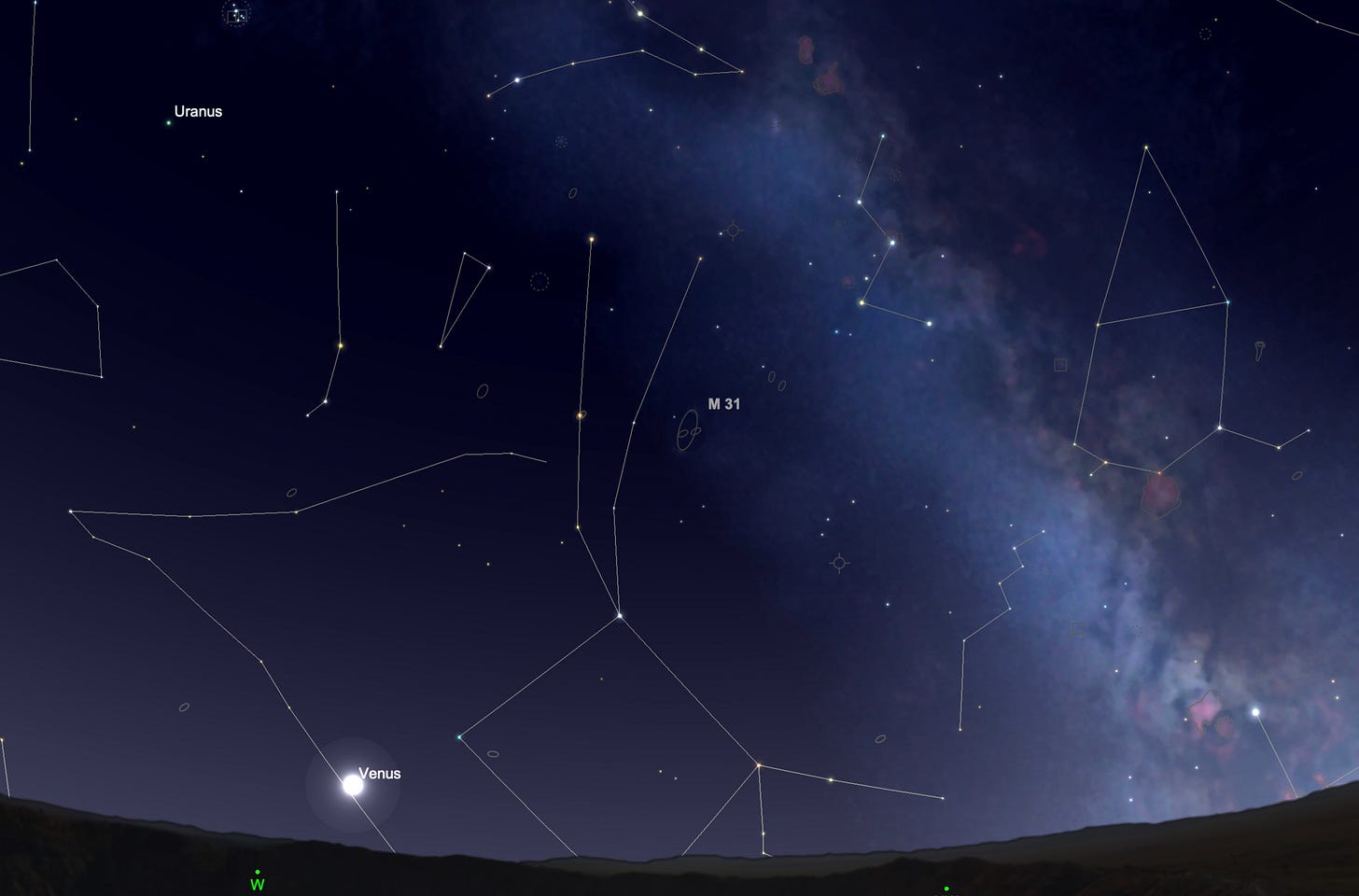
Here’s a step-by-step guide to help you locate M31 heading to the west near the end of Winter. If you live in an area with a lot of lights, you will need binoculars to spot the galaxy
Find a Dark Sky: Choose a location away from city lights to minimize light pollution.
Identify the Constellation Cassiopeia: Look for the distinct W-shaped pattern of stars in the northern sky. It’s a key landmark for finding Andromeda.
Locate the Andromeda Constellation: From Cassiopeia, draw an imaginary line towards the constellation Pegasus through the middle of the W. Pegasus is recognizable by its large square shape, known as the Great Square of Pegasus.
Find Mirach: In the Andromeda constellation, locate the bright star Mirach (β Andromedae). It’s part of a chain of stars extending from the Great Square of Pegasus.
Spot the Galaxy: About 1 degree up and slightly to the right of Mirach, you’ll find a somewhat dimmer star called Mu Andromedae. From there, move your gaze about 7 degrees towards the upper left to see the fuzzy, oval-shaped patch of light that is M31.
On a clear night, Andromeda can be seen with the naked eye, appearing as a faint, elongated smudge. Using binoculars or a small telescope will enhance your view and reveal more details.
Thanks for reading! Clear skies - Duncan :)





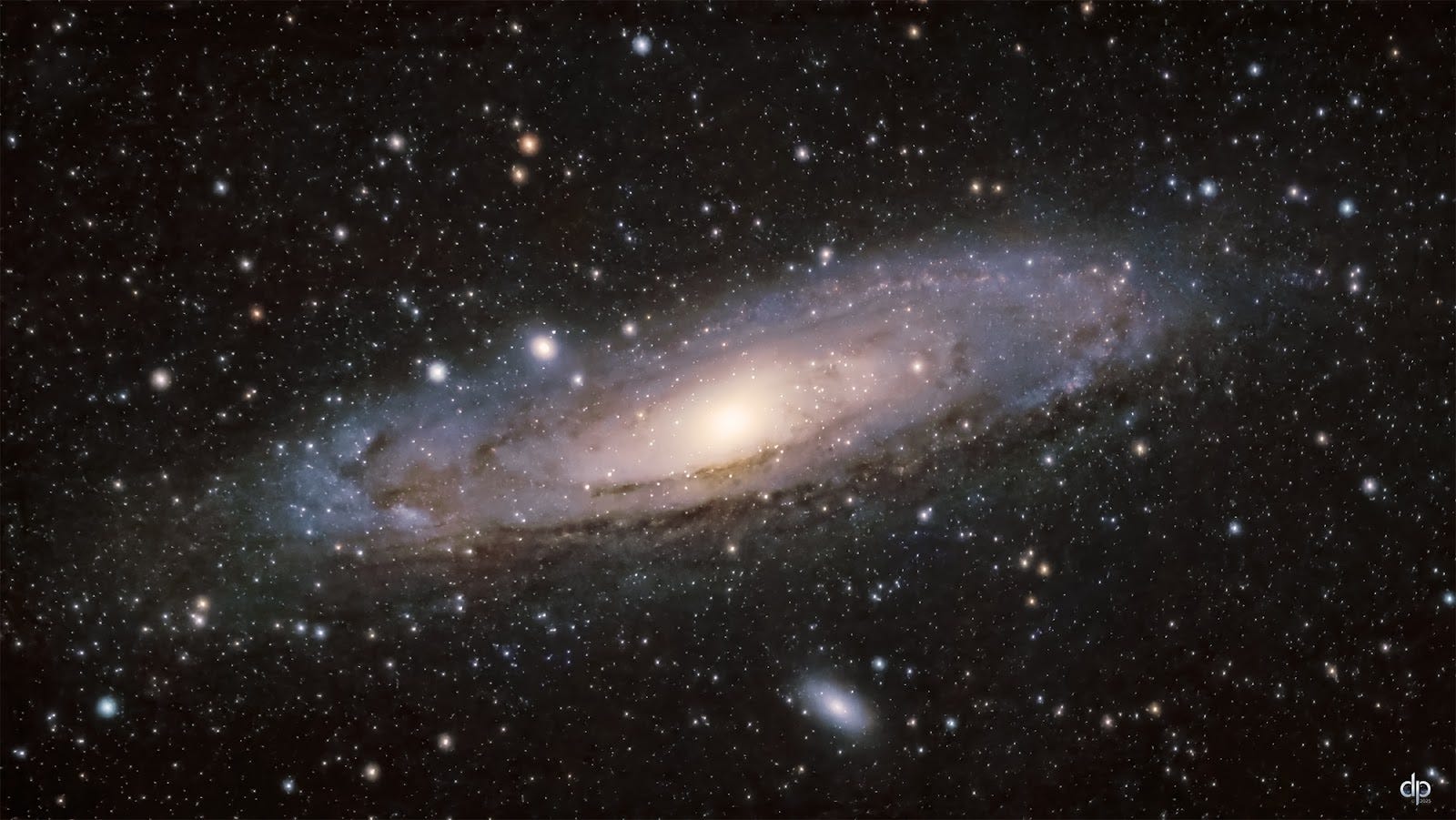


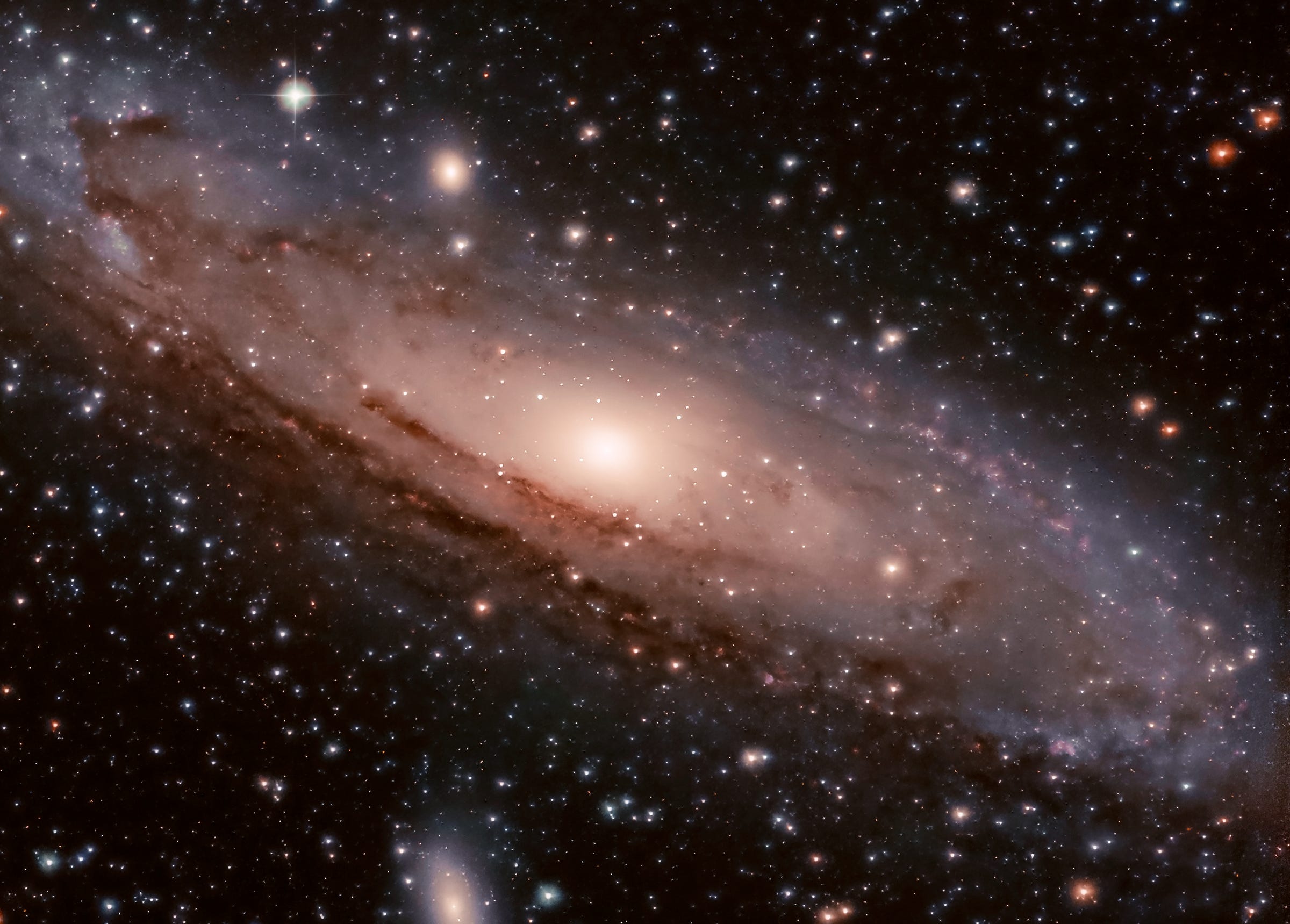

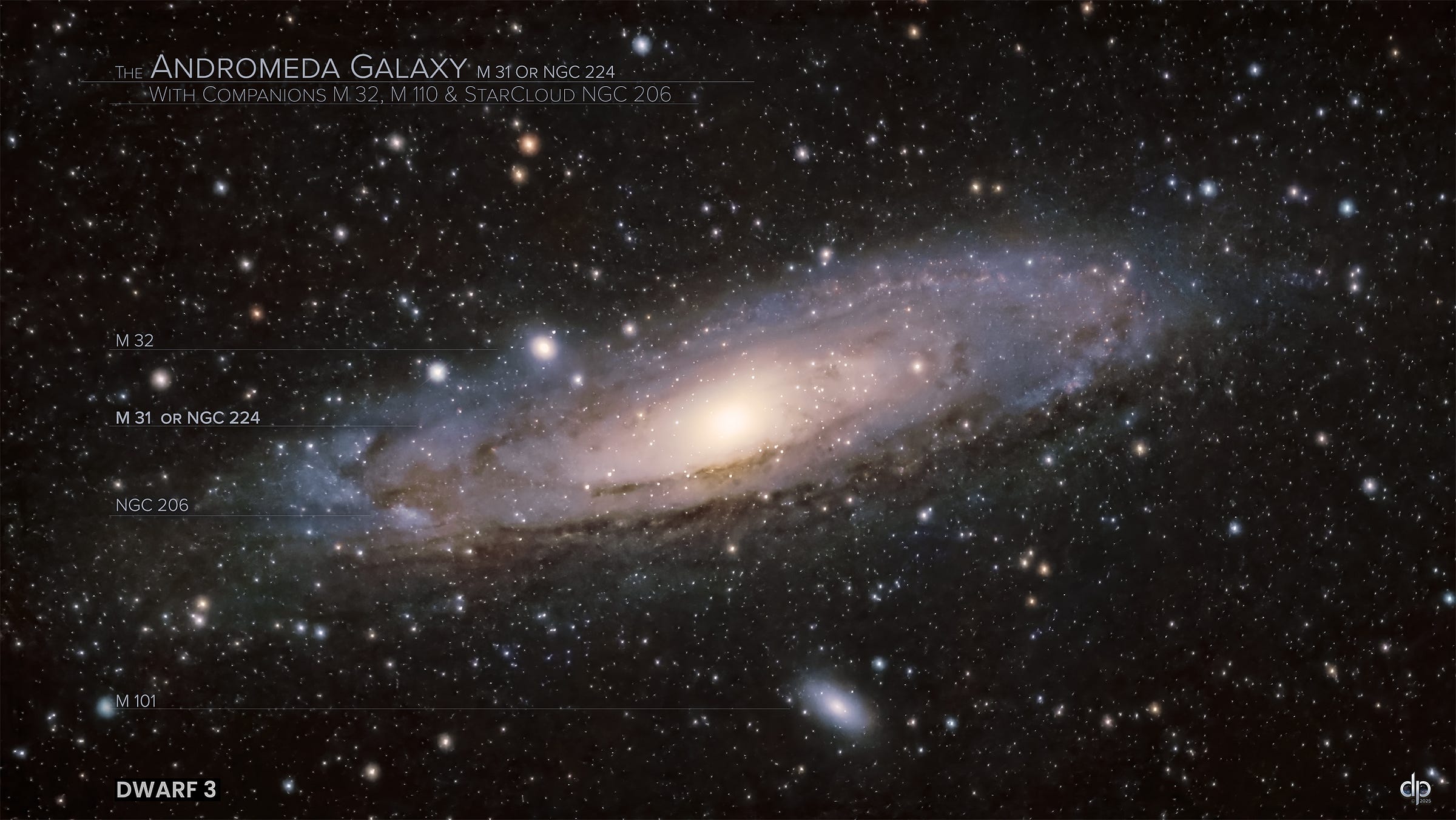
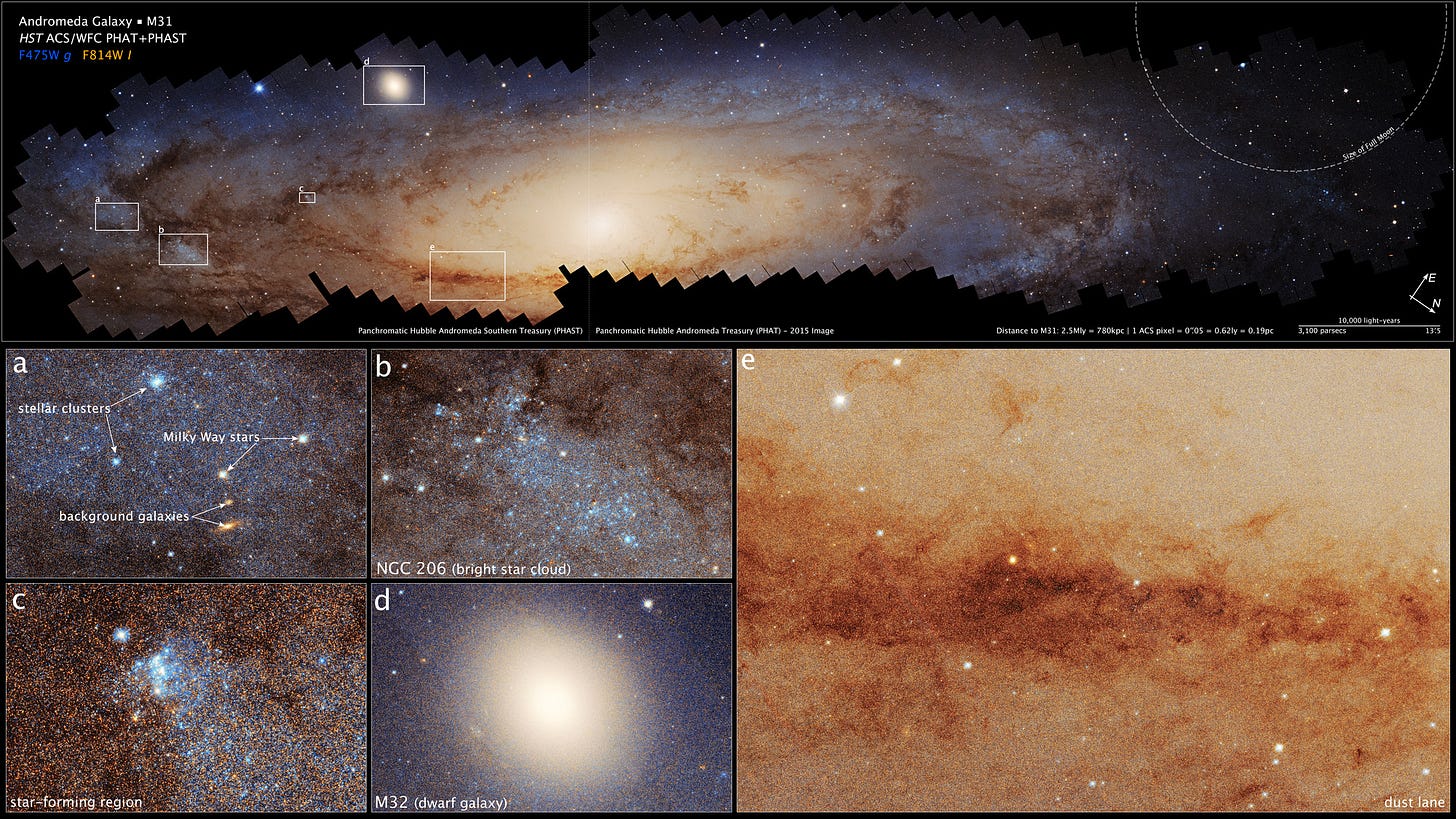

I have just found your posts. Amazing work I look forward to following, and share with others. Thank you for sharing your work.
This is amazing work! Thanks for sharing!